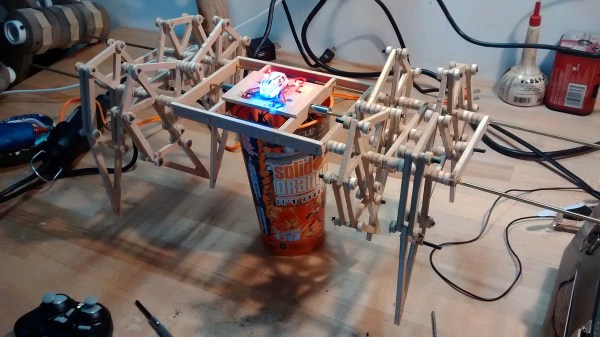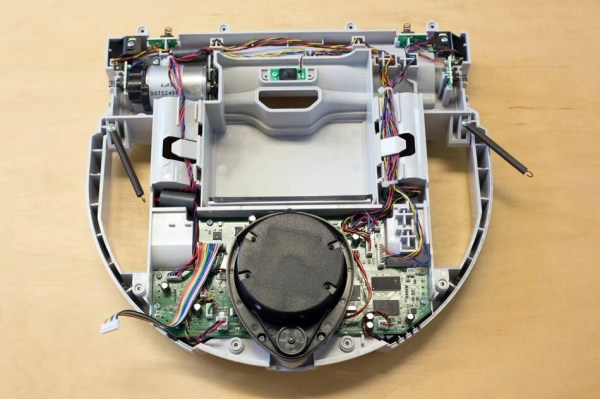We’re not sure what FESTO is advertising with their odd flying beach ball. Amongst inspirational music it gently places its translucent appendage over a water bottle and then engulfs it with an unsettling plastic sound. With a high pitched whine it hovers away with its prey and deposits it in the hand of a thirsty business man, perhaps as a misguided nurturing instinct.
Despite discovering a new uncanny valley, the robot is pretty cool. It appears to a be a hybrid airship/helicopter on a small-scale. The balloon either zeros out the weight of the robot or provides slightly more lift. It’s up to the propellers to provide the rest.
We like the carbon fiber truss around the drone. It’s a really slick build with barely an untamed wire. This seems like a much safer design than a quadcopter for indoor flying. If its end effector wasn’t so creepy it would be even cooler. Video after the break.
Continue reading “Contender For World’s Most Unsettling Drone?”



















